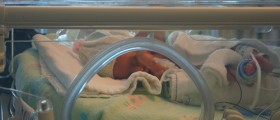
Retinal detachment cannot be prevented, but early recognition can limit the effects of the condition and possibly save one’s eyesight. If you notice any of the warning signs - which we will now examine - you should contact an ophthalmologist as soon as possible.Signs and Symptoms
No pain results from retinal detachment. The warning signs that indicate retinal detachment are: sudden flashes of light in either or both eyes, a shadow covering a part of your field of vision or the appearance of ‘floaters’. Floaters are miniscule pieces of debris that make it look as if spots, hairs or strings are floating before your eyes. Should you notice any of these symptoms, consult a doctor as soon as you can.Treatment
There are surgeries that can repair retinal detachment, tears or holes. If the tear or hole has not lead to full detachment, your doctor may advise laser surgery or freezing. Laser surgery involves directing a beam of laser light through a specially designed contact lens. This laser work effectively welds together the retina and the underlying tissue in that area. Freezing, or cryopexy, involves freezing the outer surface of the eye, directly over the retinal defect. This creates a small scar that can secure the retina to the wall of the eye.
If full detachment has occurred, other procedures may be used in addition to laser surgery or freezing. The extent of the damage as well as the type and location of the detachment will determine which procedure is undertaken.
One procedure involves indenting the surface of the eye through a process known as scleral buckling. A surgeon may also decide to drain and then replace the fluid in the eye. This is known as a vitrectomy, and involves injecting gas, air or liquids into the vitreous cavity in order to reattach the retina. These two procedures are often performed in conjunction with one another. Retinopexy also involves injecting air or gas into the vitreous, in the form of a bubble. The bubble expands, any fluid that passes through the eye is absorbed and thus the retina is able to reattach itself to the eye wall.
It should be remembered that surgery isn’t always successful and a reattached retina doesn’t always guarantee normal vision. Even if an improvement is seen, it may take several months to recover one’s vision.

















Your thoughts on this
Loading...